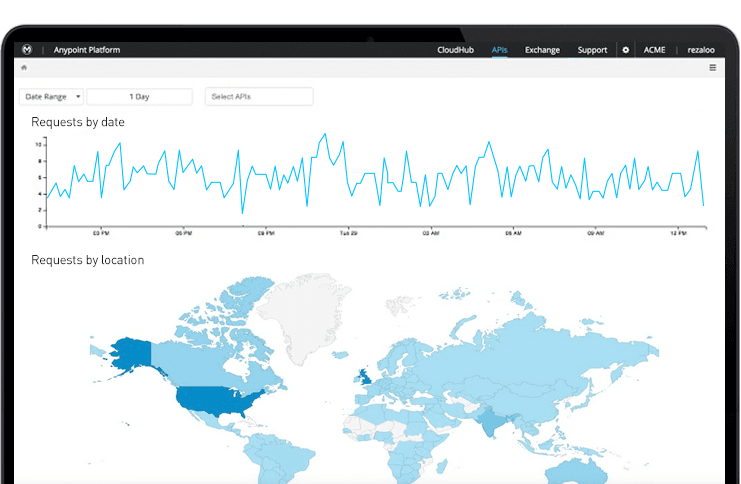If off-the-shelf software doesn't fit, developing your own may be an option.
The evolution of technology and increasing customer needs are causing companies to consider new ways to keep up with changes. In the past, off-the-shelf software companies kept up with trends or allowed enough customization of their applications that their products were enough. For many businesses trying to keep pace with technology today, however, this is no longer the case.
Some companies need more than what off-the-shelf software has to offer, and they are turning to custom software development to fill this gap. While this can provide a business with exactly what it needs, custom software isn't for everyone. Developing your own software can take a lot of time and be expensive.
If you are a startup or small business owner who is wondering whether you should develop custom software for your company or stick with off-the-shelf solutions, we've created this guide for you.
Our lists of customer software development companies by location can help you find the services you’re looking for.
What is custom software development?
Custom software development is the process of planning, designing, building, and deploying software that meets specific business requirements instead of customizing generic software to fit needs or changing business processes to fit the workflow of off-the-shelf software.
Businesses will often use packaged applications like CRM software, ERP software, calendar management software, and other business applications to cover their software needs. In cases where these tools are not the right fit, they may turn to a third party or an internal software development team to build custom software from the ground up. This is sometimes referred to as bespoke software.
The processes of custom software development are the same as any development process. Requirements must be gathered, the code has to be written and tested, and a streamlined deployment process has to be created. If you are wondering what a built-in software is, it is only the final step.
Benefits of custom software development
Understanding the benefits of custom software development will help you decide whether to hire a software team to build your next project from scratch or stick to off-the-shelf applications.
The perfect fit
Unless a business only needs basic functionality out of software, off-the-shelf solutions are usually a compromise. You get some of the features you need, and you get a solution that is quick to launch, but there will be some features you will have to throw out or work around because the software just doesn't support it. With custom software development, you can build any features you have the budget and bandwidth for.
Total personalization
According to McKinsey, 71% of consumers expect personalized solutions from the companies they deal with, and 76% of users get frustrated when they don't get them[1]. When you build an application from scratch, you can personalize it to the needs of your customers and staff, so they never feel like they have to work around a solution that doesn't quite fit all their needs. Personalization can also increase customer loyalty and satisfaction.
Better scalability and flexibility
With a customized solution, you own the source code of your application. This means you can make any changes whenever you need. With packaged software, you are limited to the flexibility built into the application and can't customize it beyond that.
When you plan your project, you can build scalability into the requirements. Doing so will ensure it handles increased loads with ease instead of crashing or becoming unresponsive when traffic picks up.
Integration
With packaged software solutions, you will get some integration options, but these will often be limited to the most popular applications and data sources. With a custom software solution, developers can build any type of integration into the application.

Software integration in Anypoint Platform (Source)
Robust security
Many companies use off-the-shelf software, and many even use open-source components. This means that other developers and hackers have access to the source code and can examine it for flaws and use those flaws to access other systems that are using it. With custom software, the final application is yours alone, and only you and the developers you hired have access to it, reducing the chance of intrusions.
Custom software vs. off-the-shelf software
You can find off-the-shelf applications for almost every task that needs to be done in a modern business today, and there are many advantages to using one of these solutions when they fit all of your needs.
Packaged software can be easy to use and usually integrates with other applications and data sources commonly used in business. Pre-existing software also allows you to get started using it quicker and easier. Normally, you simply download the software and run it or sign up online and do your work in browser-based software. You can also get a certain level of software customization features from off-the-shelf solutions.
The problem with packaged software, though, is that it won't necessarily integrate with all of your systems, especially when you use a few unique or legacy applications, while custom software can be written to work with any system. Although packaged software can be customized, there are usually limitations that custom software does not have.
With custom software, you can get exactly what you need, but it will also take longer for the solution to be ready to use. The typical custom development project involves many processes and can take months longer to implement than off-the-shelf software.
Best practices for developing custom software
If you decide that you are going to build vs. buy a framework, then it is important to follow these best practices to make sure the process goes smoothly, you get exactly the software you need, and it is delivered in a timely manner.
Consider build vs. buy
It is important to look at the pros and cons of going with a custom software solution because there are quite a few of each of them, and you may run into more as you start planning the project. At this point, you still have a chance to change the plan.
If you like the idea of paying for existing software because it will be quick and convenient, don’t forget that you could run into issues later on when you discover that the application doesn't have every feature you need. On the other hand, if you think custom software is best because you can provide a unique experience to users, you need to be aware of how long it could take to get that software up and running. This is all the more reason to weigh your options and conduct thorough research before making a final decision.
Define your requirements
Requirements are an important part of the custom software development process. If a business plans on going through the trouble of building a custom application, that company needs to define clear requirements.
These requirements should answer the following questions:
What is your current process? Talk to subject matter experts in your company who know the process in and out, and get as many details as you can. Making assumptions at this point will add bottlenecks during development.
What problem are you solving? Make sure your solution will actually be better than what you had before. Get feedback from stakeholders and make sure they agree with the plan before you proceed.
How do you define success? Make sure that the processes and workflows you expect from the solution are sketched out at the beginning. This will help decide when the project has met its goals.
Understand development methodologies and technologies
If you haven't been involved in a custom development project before, you will need to familiarize yourself with the process your software team will use. Misunderstanding how this process works can lead to missed time and budget deadlines. Here are some common development methodologies.
Agile software development: In this iterative process, development takes place in 2-4 week sprints. After each sprint, a new feature is developed and tested.
Waterfall software development: With this process, development happens in phases, and teams can only move forward when one phase is done.
Hybrid software development: This is a combination of Waterfall and Agile development methodologies. On some complex projects, a one-size-fits-all approach doesn't allow for enough flexibility, so both methods are used.
Plan and set milestones
Before the custom development project is underway, you need to create a project team to direct the course of the project. This will include the development team you hired or internal developers, the subject matter experts that will be using the software, and a project manager to lead the project. Once the team is put together, they need to create a realistic road map for the project.
This project plan should have milestones to track progress. These are stages in the development process that have a completion date and a budget target. At each milestone, the state of the project should be reviewed to determine if your timeline, budget, or plan needs adjustment.
Summary
When you need software to run your business, you are confronted with two main options: packaged software or custom software. For many companies, off-the-shelf software will work for most use cases and provide a reliable, easy-to-use, easy-to-implement solution that they are happy with. But for companies with unique needs, custom software development is often the better way to go because they can get exactly what they need from the ground up.
For more information on getting the right software for your small business or startup, check out these links:
Depending on your needs, you can hire a custom software development company to help with each part of the development phase for your business. Check out our hiring guide to determine the best fit for you.

